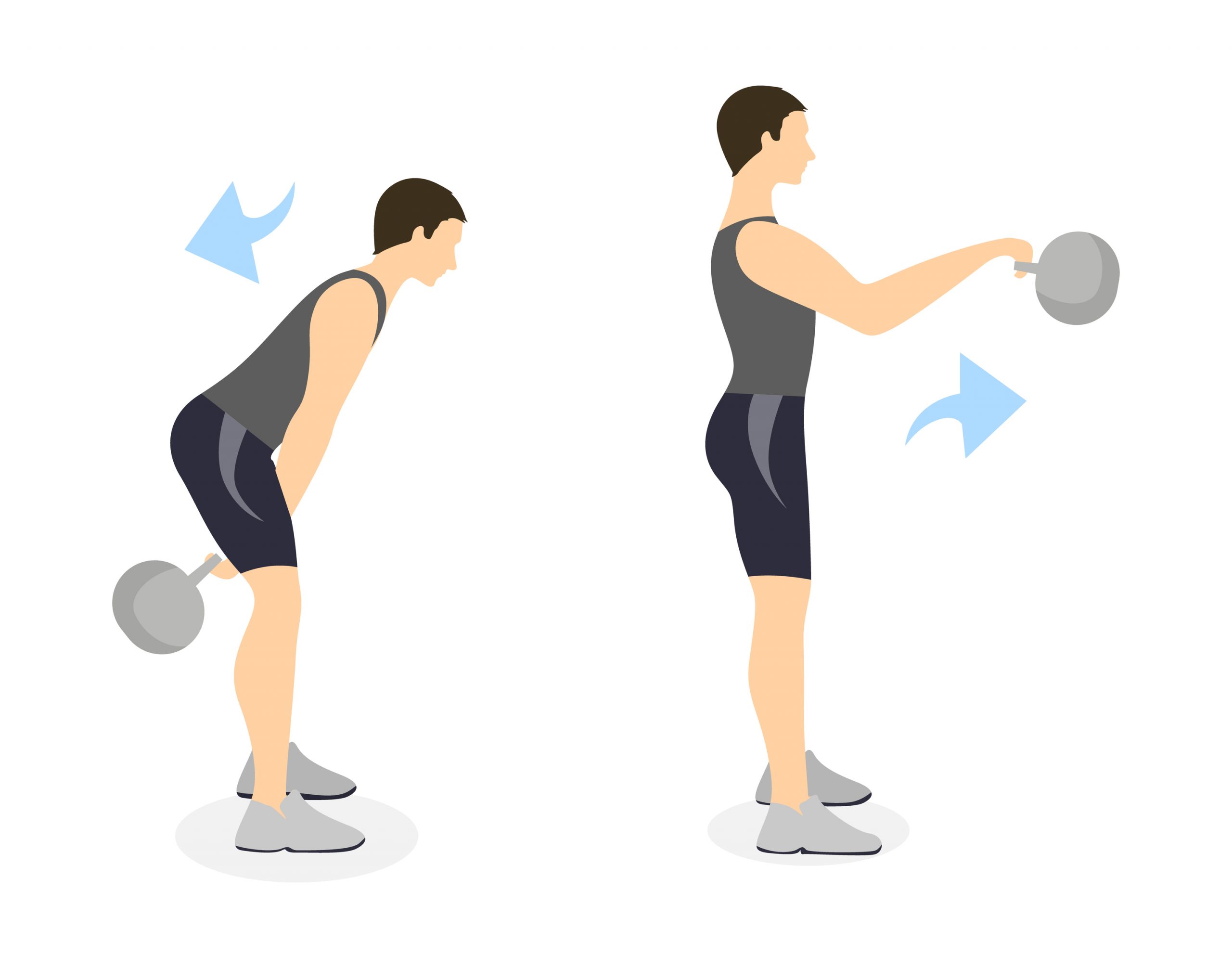The “Kettlebell Swing”
14/12/2020 # Home

The Kettlebell Swing
The kettlebell swing offers a simple introduction to core-to-extremity movement patterns. The hips and legs generate the force of the movement, which is then transferred through the arms and into the kettlebell. The midline must remain stable throughout the movement. These movement concepts and basic positions are shared with many other barbell lifts.
The mechanics of the deadlift and the importance of achieving and maintaining lumbar
and thoracic back extension during the deadlift are also essential when performing Olympic lifts or kettlebell swings, cleans, and snatches. The same holds true for
Coach Burgener’s definition of the Olympic lifts as “a vicious extension of the ankles, knees, and hips that creates momentum and elevation on the barbell.” This same “vicious extension” also takes place in the jumping movements of gymnastics and parkour. One movement, many applications—now, that’s inspiring.
We will discuss a few additional kettlebell swing errors and their remedial drills, and then move on to the power swing and American swing.
Kettlebell swing troubleshooting:
Problem: Rounded shoulders; shoulder blades sticking out
Solutions:
- Look straight ahead, not down.
- Force your chest open and pinch your shoulder blades together.
- Perform wall squats with a rubber band or towel overhead. Concentrate on pinching your shoulder blades together.
- Place your hand on the trainee’s back, with thumb and forefingers touching the protruding shoulder blades, and pinch them together.
Problem: Lumbar spine flexion (i.e., tailbone tucks under) at the bottom of the swing.
Solutions:
- Activate your hip flexors upon descending into the swing. Use hip flexor recruitment.
- Tight hamstrings can be a contributing factor. Practice the good morning stretch:
- Stand with feet hip-width apart. Hinge at the hips and bend forward, maintaining lumbar extension and keeping your chest open and head up.
- Once you feel a little tightness in your hamstrings, hold that position and isometrically contract all the muscles of your lower body. Hold for 5 to 10 seconds, then exhale and relax.
- When you relax, let your hamstrings lengthen, increasing your ROM. Repeat the drill 3 times.
Problem: Technique is good, but you’re still not generating enough power.
Solutions:
- Synchronize your breathing; inhale through your nose and exhale through clenched teeth, similar to a fighter exhaling upon contact. Glutes and abs should quickly contract at the top of the swing.
- Perform sets of standing vertical jumps between each set of swings. Remember, it’s a “vicious extension of your hips, knees, and ankles.”
Power swing:
The power swing increases the tempo and power output of the Russian swing.
In addition, it will pressure test your form. This is truly a self-correcting exercise.
- Perform a Russian swing (i.e., to eye level).
- When the kettlebell reaches the highest point, immediately reverse the direction, pushing it back between your legs as hard as you can. Timing is everything. It’s the simultaneous contraction of your abs, lats, and chest that is the key to quickly reversing the direction.
- Never look down. Keep your head up and eyes focused on the horizon.
- When the kettlebell reaches its lowest point, explode out of the hole. You will notice a lot more kinetic energy built up at the bottom of your swing and more power throughout your extension. Try to move faster with every rep.
- Be aware that your grip will be heavily taxed during this exercise. Be sure there is a clear impact zone in front and in back of you.
American swing:
This is CrossFit’s swing of choice. The kettlebell moves through its extreme range of motion. The swing culminates at the top with the kettlebell directly overhead, and then the bell strafes the ground as it passes between the legs at the bottom. This makes for a very demanding exercise, which is why CrossFit prefers it. (Refer to issues 20 and 25 of the CrossFit Journal for more details).
Perform one to three Russian swings, and then take it overhead.
- Keep your back arched.
- Look straight ahead.
- Keep your arms straight throughout the move.
- Keep your chest high throughout the swing, especially in the bottom position.
- Drive your hips up and forward.
When taking the kettlebell overhead, most people have a tendency to overcompensate by using their deltoids to get the kettlebell from waist or chest level to overhead. This is common in beginners who are unfamiliar with how to use their hips properly.
Experienced kettlebellers can also fall prey to this error, especially toward the end of a tough routine. Overcompensating with the deltoids is less than desirable for two reasons. First, it places unnecessary strain on the deltoids. Second, the momentum it creates can be difficult to control and can place undue stress on your shoulders and lower back. This especially true if you wait until the last second to “put on the brakes.” If you have a history of shoulder injuries, it is safer to activate the brakes a little earlier. End the top of the swing just in slightly in front of your head. Be sure to powerfully contract your abs and armpit muscles at the top of the swing. Your shoulders will thank swing. Your shoulders will thank you for it later.
You have now built for yourself a very solid foundation for future kettlebell exercises. Always remember: repetition establishes habit.
Vince Lombardi said, “it’s not the practice that makes perfect, but rather it’s perfect practice that makes perfect.” Perfect practice is the key; accept no less. Strive for perfection and you will achieve excellence.
Reference:
Haff, G., & Triplett, N. T. (2016). Essentials of strength training and conditioning. Human Kinetics.
Try our FREE 7-day trial subscription and experience PA Coaching by filling up the form: Link
